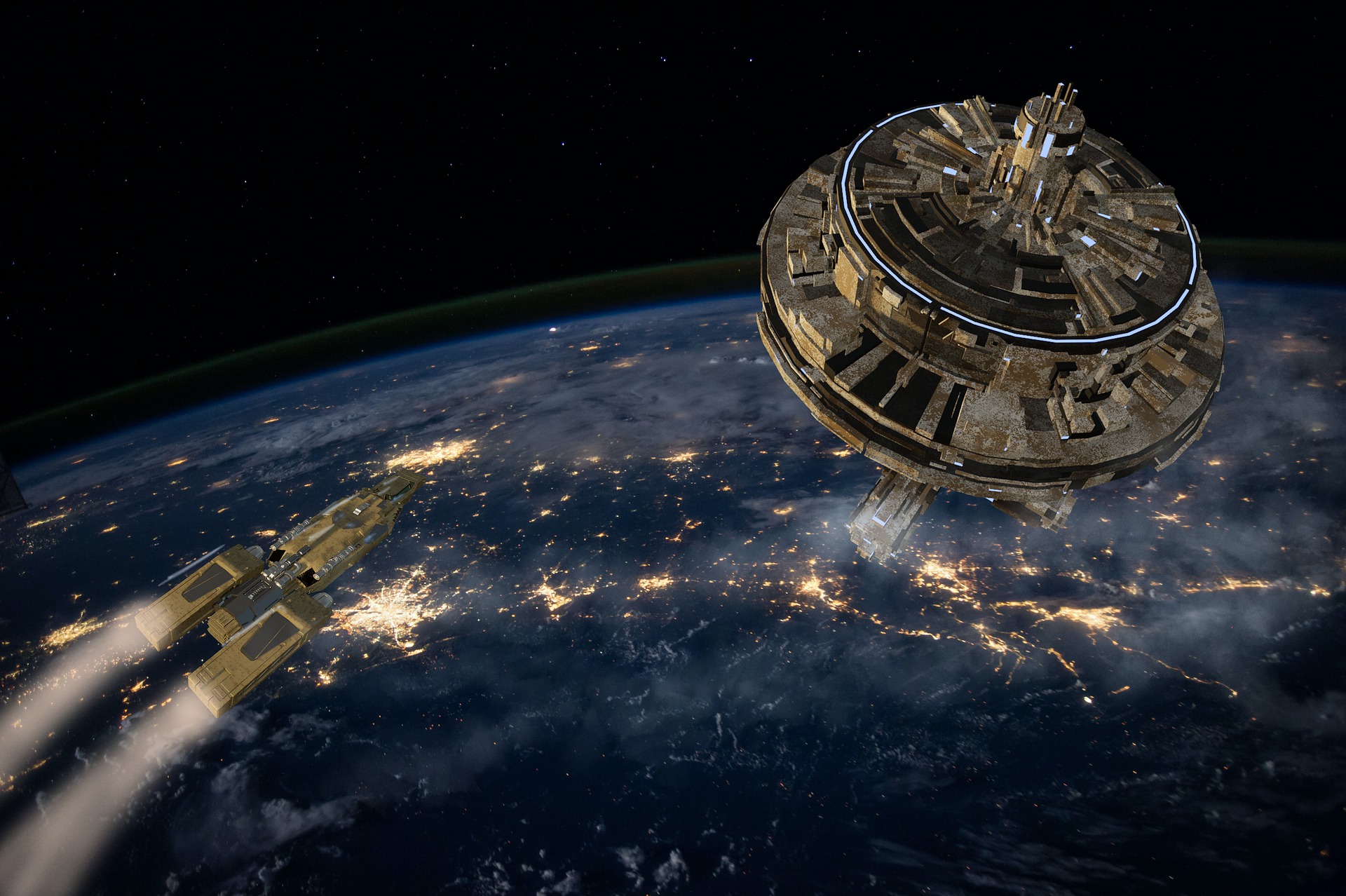Featured
Science Fiction and the Drake Equation
I started thinking about one of the classic authors of science fiction, and the setting he created for some of his stories. I often wondered what the implications for the Drake equation would be in that particular setting. I’ve taken a subset of the stories for this setting, since not all of the story settings are self-consistent. Let me review the three conditions from four books:
-
- Humanity discovers that there are ancient alien civilizations on both Mars and Venus.
- Life is found on Ganymede.
- The first two interstellar locations visited by humanity have life, and one of them has an alien civilization.
This is a significant difference from our recent discussions about the Drake equation applied to the universe as we know it.
Lets first look at the probability of life.
In the stories, there is no indication of there being life on the Moon other than the life in the domed colonies that humanity put there. There is also no indication of life on any other of Jupiter’s moons, nor any of Saturn’s.
Assuming we only count Io, Europa, and Calisto from Jupiter, and Titan from Saturn, we have a total of 4 bodies with life and 5 bodies without. This gives a chance of a planet having life at 44.4%.
Next, we look at the probability of planets having life also having intelligent life.
With Venus, Earth, and Mars all having intelligent life, it follows that 0.75 of all life bearing planets have life evolving to intelligence. If we include the other two planets from outside the solar system, we find four out of five planets, or 80%.
Extending this to the galaxy, we move on to attempt finding the number of civilizations that are present.
The initial value for the probability of a star having planets at roughly the time these stories was written is about 0.1; however, we have the fact that at least two stars have planets besides the Sun. This can be excepted as true since we don’t have enough evidence to set it at any other value. (Note: the author’s later work introduced a multitude of worlds but the all supported life, but this really didn’t talk about all stars or all worlds within the solar systems).
The number of planets within such a system is an average of nine, one, and one (I don’t recall seeing additional planets mentioned in these systems). We’ll set that average to be 4.
The fractional number of worlds having life is 0.44, and the fraction having intelligent life is 0.8.
The fraction of those civilizations having the ability for interstellar communications will be assumed to be 0.5, only Earth and Mars.
This give f*(0.1)*(4)*(0.44)*(0.8)*(0.5)*L, where f is the stellar formation rate and L is the lifetime of the technological civilization. Thus the number of civilizations in the galaxy is f*L*(0.07). Given that the stars form approximately 1 per year, and that we take the lifetime of a civilization to be a million years (using the fact that Mars was on the verge of collapse after a million years), we can now estimate that in this author’s milky way galaxy would contain 70 thousand civilizations.
For details of this calculation see my article on the Drake Equation:
Mind you, it’s been a while since I read the four books mentioned above. For those wanting to look for themselves for something I have missed, they are: Between Planets, Farmer in the Sky, Universe/Common-Sense, and Methuselah’s Children by Robert A. Heinlein. Another Novel of his, that is in one way contradictory to the others, seems to nail the idea of the galaxy having thousands of civilizations: Have Spacesuit Will Travel.
